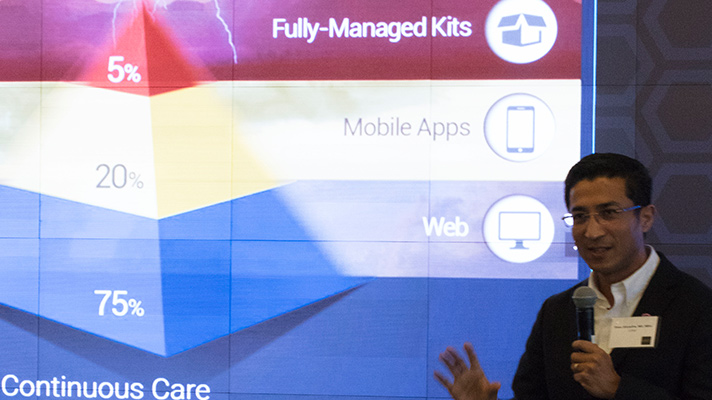The success of connected health will rely on the model called the “bedless hospital,” which focuses on delivering more care in the patients’ homes and less care in the hospital setting, and engaging patients in their journey toward wellness.
While it’s difficult to predict what will happen next in Washington, there is certainty around one thing.
The industry needs to “move from volume to value-based care. Everyone is on the same page about that,” said Jeff Coughlin, senior director of federal and state affairs at HIMSS. Coughlin led a discussion at The Health Innovation Think Tank, Adoption and Policy at a Crossroads, a one-day event held at the UPMC Center for Connected Medicine in Pittsburgh, and co-hosted by Lenovo Health, Justin Barnes Advisors, Center for Connected Medicine (CCM), Inventiv Health and HIMSS Media. The Think Tank brought some 50 healthcare delivery system, payer organization and healthcare IT vendor thought leaders together to offer their insights on a variety of issues.
Under the emerging value-based care model, which clearly centers on improving clinical care outcomes, what happens outside of the traditional care setting is becoming more important than ever before. As a result, HIMSS is supporting initiatives such as the “Creating High-Quality Results and Outcomes Necessary to Improve Chronic (CHRONIC) Care Act of 2016” and the “Creating Opportunities Now for Necessary and Effective Care Technologies (CONNECT) for Health Act of 2017.” CONNECT is specifically designed to remove barriers to the use of telehealth and other healthcare technologies such as remote patient monitoring, resulting in greater access to high-quality care, improved continuity of care and better value for patients and the Medicare program.
The pending legislation could help to accelerate delivery of care organizations’ connected health efforts, as they continue to focus on finding ways to “increase patient empowerment,” which will help to traverse the existing care gap, said Tom Foley, director, global health solutions strategy at LenovoHealth.
“Sometimes, it’s not what happens in front of a physician or while on the phone with a care coach, it’s what happens during the time when patients are on their own – and that’s where connected health technologies come into play,” he pointed out.
Indeed, the goal for health systems and hospitals should be to “keep patients away from the hospitals and sustain them in the trajectory toward wellness as opposed to only curing illness,” said Rasu Shrestha, MD, chief innovation officer at UPMC and executive vice president at UPMC Enterprises. As such, the healthcare industry should move toward the “bedless hospital,” a model that focuses on delivering more care in the patients’ homes and less care in the hospital setting.
The easier-said-than-done proposition, however, requires a strategic approach that moves beyond simply uttering “buzz words.” To start, the key to successfully sustaining a bedless hospital lies in “incentivizing the behavior changes that will sustain the residents of the community toward wellness,” Shrestha said. To do so requires “leveraging some of the principles of design thinking and engaging end-users. It is really important to engage them in the design of the solution before a single line of code is even written,” he added.
Such efforts could help to more precisely meet consumers’ needs. For example, by working closely with chronic care patients, leaders at Livongo have discovered these patients actually “hate dealing with their diseases” and don’t necessarily want to engage more. Instead, they want to “engage less and experience better health,” said Jim Pursley, chief commercial officer at Livongo.
To this end, the company is re-engineering chronic condition management to elegantly integrate everything patients need into an experience they will love – which requires providing patients with the optimal level of engagement.
Such efforts could mean providing patients with the opportunity to pass data via a variety of devices to care providers in an effort to “liberate data in the intelligent home environment,” according to Chris Fickle, director of sales at Qualcomm Life.
“When we talk about the connected experience we look at anything and everything being connected – disposable devices, patches, smart phones, tablets, personal assistants. Things that we don’t necessarily think about being connected today could be connected tomorrow,” Fickle said. To truly enable intelligent care, however, organizations need to adopt variety of best practices to ensure that data is connected, continuous, (near) real-time, secure, highly reliable and liquid.
By adopting these and other best practices that were uncovered during the Think Tank, the healthcare industry can truly move toward the successful realization of value-based models and can “create a connected ecosystem that supports a virtual care environment and ultimately brings value to all constituents – providers, payers, and most importantly patients,” Foley concluded.

